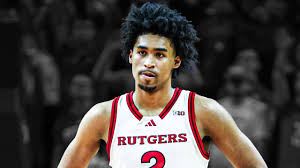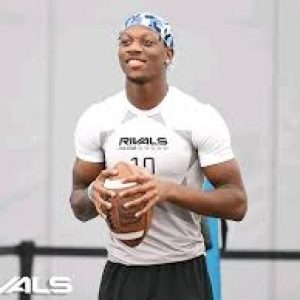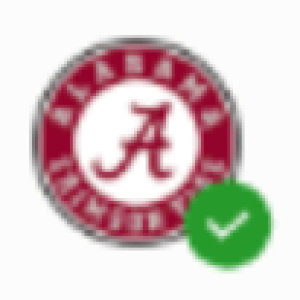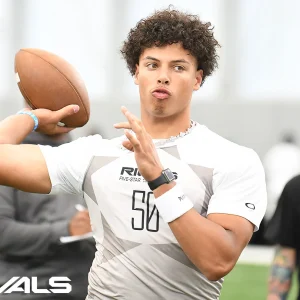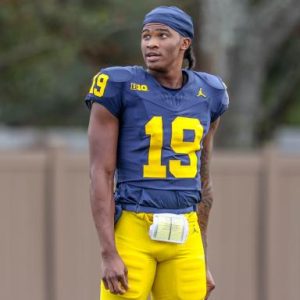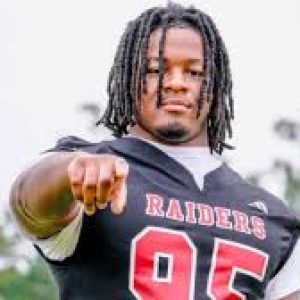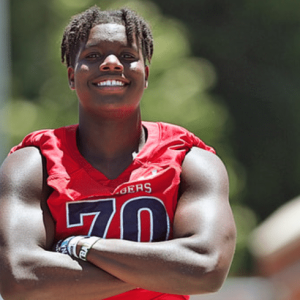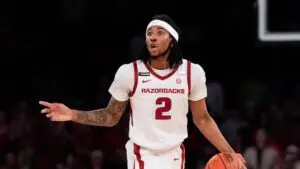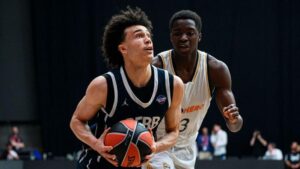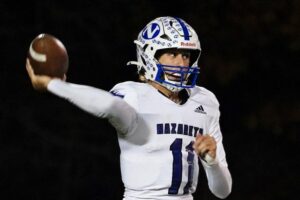After the trade deadline dust has settled, we’ve run our draft lottery simulation to project the top 10 picks. Here’s our comprehensive analysis of how the lottery could unfold based on current team needs and prospect evaluations.
1. Washington Wizards: Cooper Flagg (F, Duke)
Measurables: 6’9″, 200 lbs Key Stats: 22.6 PPG, 6.8 RPG, 4.6 APG, 53/45/85 shooting splits Last 12 Games: 12-0 record (prior to Clemson loss)
Analysis: The Wizards strike gold in our lottery simulation, landing the clear-cut top prospect in the draft. Flagg has been nothing short of extraordinary at Duke, leading the team in virtually every statistical category as a freshman. His two-way impact is unprecedented, combining elite help defense with rapidly improving offensive creation. The potential pairing with Bilal Coulibaly could give Washington one of the most versatile young frontcourts in the NBA. Flagg’s growing confidence as a three-point shooter (45% from deep) addresses a critical team need, while his defensive prowess could immediately transform the Wizards’ bottom-ranked defense.
2. San Antonio Spurs: Dylan Harper (G, Rutgers)
Measurables: 6’6″, 195 lbs Notable: Top-ranked guard prospect
Analysis: Despite having Stefan Castle and recently acquiring De’Aaron Fox, the Spurs opt for the best player available. Harper’s size and versatility allow him to play both guard positions effectively. His advanced ball-handling skills and ability to create separation make him an ideal secondary creator next to Fox. While he’s been dealing with minor injuries at Rutgers, his ceiling as a three-level scorer who can facilitate makes him too talented to pass up. Pop’s system could help refine Harper’s occasional defensive lapses.
3. New Orleans Pelicans: V.J. Edgecomb (G/F, Baylor)
Recent Stats: 20 PPG, 1.8 SPG, 3 APG, 51% 3PT in last 8 games Strengths: Elite athleticism, perimeter defense
Analysis: Edgecomb gets the nod over Ace Bailey here due to his superior defensive profile and recent shooting surge. His combination of athleticism and two-way potential makes him an ideal fit alongside Zion Williamson and Brandon Ingram. After showing significant improvement during conference play, particularly from three-point range, Edgecomb projects as the type of 3-and-D wing with creation upside that could thrive in New Orleans’ system.
4. Portland Trail Blazers: Ace Bailey (F, Rutgers)
Stats: 20 PPG, 2.4 stocks, 47% FG, 38% 3PT Measurables: 6’10”, 185 lbs
Analysis: Portland adds another high-upside scorer to their young core. Bailey’s combination of size and handling skills draws inevitable Kevin Durant comparisons. While his shot selection needs refinement (particularly his tendency to settle for contested pull-ups), his scoring arsenal and length make him an intriguing prospect. With Scoot Henderson and Shaedon Sharpe already in place, Bailey could provide the frontcourt scoring punch the Blazers desperately need.
5. Utah Jazz: Stephon Jakuchonas (G, Illinois)
Measurables: 6’5″, 190 lbs Strengths: Court vision, size for position
Analysis: The Jazz find their point guard of the future in Jakuchonas. His exceptional basketball IQ and playmaking ability should thrive in Will Hardy’s system. While turnovers have been an issue in Big Ten play, his size and ability to see plays develop before they happen make him an ideal modern NBA lead guard. The potential pick-and-roll partnership with Walker Kessler could be especially dynamic.
6. Charlotte Hornets: Asa Newell (F/C, Georgia)
Strengths: Elite athleticism, rim running Key Trait: Vertical spacing
Analysis: With Mark Williams’ future secured, the Hornets add another athletic big in Newell. His ability to play above the rim and run the floor makes him an ideal target for LaMelo Ball’s lob passes. Newell’s defensive versatility and developing jump shot provide intriguing upside as either a power forward or small-ball center.
7. Toronto Raptors: Kamin Maluach (C, NBA Africa)
Profile: Project big with elite defensive upside Key Skill: Shot blocking, wingspan
Analysis: Post-Ingram trade, Toronto looks to the future with Maluach. His time in the NBA Africa Academy has showcased his immense defensive potential. While raw offensively, his shot-blocking and length make him an intriguing development project for Toronto’s excellent player development staff.
8. Brooklyn Nets: Trey Johnson (G, Texas)
Strengths: Elite shooting, scoring instincts Concerns: Defensive motor, playmaking
Analysis: The Nets begin their rebuild with one of the draft’s purest scorers. Johnson’s mid-range game and shooting touch are already NBA-ready. While questions about his defensive engagement and playmaking exist, his scoring ability alone makes him worth the pick at this spot.
9. Oklahoma City Thunder (via PHI): Liam McNeeley (F, UConn)
Background: Key player on defending national champions Strengths: Shooting, team defense
Analysis: The rich get richer as OKC adds another shooter to their arsenal. McNeeley’s winning pedigree at UConn and ability to play within a system make him an ideal fit. His shooting and defensive versatility should complement SGA and Holmgren perfectly.
10. Chicago Bulls: Jager Demon (G/F, BYU)
Measurables: 6’8″, 200 lbs Comparison: Josh Giddey-type playmaker
Analysis: Chicago takes a swing on Demon’s unique playmaking ability at his size. While his shooting remains a work in progress, his court vision and handle at 6’8″ provide intriguing point-forward potential. The Bulls need more creativity in their offense, and Demon could provide it in a variety of lineup configurations.

